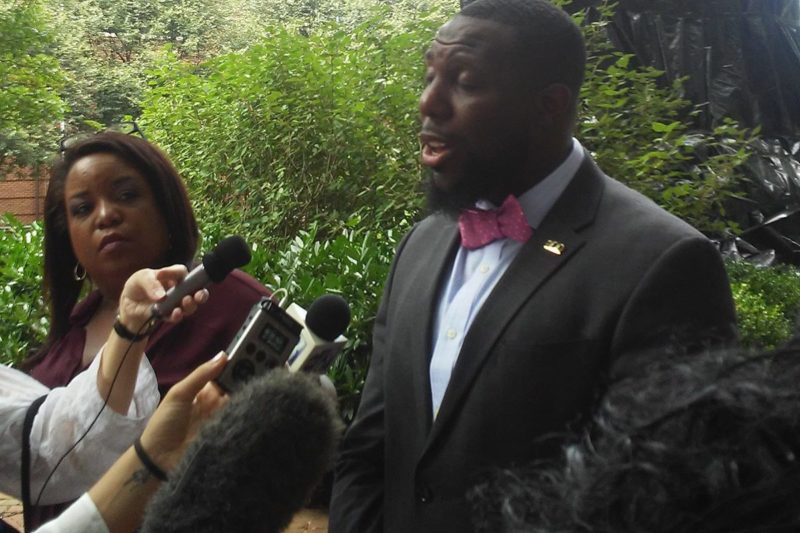Charlottesville’s Confederate Monuments Shrouded in Black
Charlottesville officials voted to cover the statues that have drawn violent white nationalist and neo-Nazi groups to the city.

A pair of massive black tarps are now sitting at the center of Charlottesville’s two most notorious city parks.
While Virginia state law prohibits the removal of monuments to veterans, the Charlottesville City Council became desperate to find a way to meet public demands for their removal after a Monday night council meeting turned into a near riot. The compromise reached was an agreement to shroud the statues of Confederate generals Robert E. Lee and Stonewall Jackson in shapeless black coverings.
At the City Council meeting, Mayor Mike Signer tried to conduct business as usual but was interrupted by hundreds of angry citizens chanting for his resignation. Three people were arrested for interrupting the meeting. The crowd became furious, and the entire city council fled the room.
Seven police officers looked on, seemingly unsure of what to do as the anger turned towards them. Members of the crowd shouted at them for failing to protect civilians from assaults during the violent white supremacist rally on August 12.
Vice Mayor Wes Bellamy returned to the room and offered to give a microphone to anyone who wanted one to speak. A sort of order gradually returned to the council chambers.
But when Signer returned, he again became the target of demands for his resignation. Signer ran away again before later returning. By end of the marathon meeting, which stretched for more than four hours, a vote was held to cover the statues as a temporary solution.
On Wednesday afternoon city workers used a lift to cover the statue of Stonewall Jackson in Justice Park as Bellamy stood in its shadow, steps away from where the KKK held a rally in July.
“History,” said Bellamy to a small crowd, “It’s a day for our community to truly move forward …. It shows that when the citizens of our community speak that council does their best to listen. We have a lot of passionate people … who were looking for answers. I think that council rose to that occasion on Monday night.”
“This is bigger than just what occurred last weekend or last month or even just as the statue discussion began,” Bellamy said. “This is about a culmination of several things that have transpired within our community, and we are doing our best to make amends. This doesn’t mean we are trying to erase history. This doesn’t mean that we are trying to change history. But what we’re doing is moving forward as the city of Charlottesville to create the new Charlottesville, an equitable Charlottesville, a place that has equity throughout all of our public spaces …. A place that is welcoming to all. And this symbolizes that.”
At the edge of the park, an elderly woman argued with a younger woman.
“They just won’t even be able to teach history anymore,” the older woman said angrily.
“I’m sorry you don’t understand this,” the younger one replied.
A few blocks from where Bellamy spoke in Justice Park, the statue of Robert E. Lee was shrouded in Emancipation Park. A pickup truck slowed in front of it and a white man began shouting obscenities out of his window at the few people gathered there.
With no precedent for Charlottesville’s decision to cover the statues, it isn’t clear whether the act could be construed as a violation of the state law against removing war monuments. Bellamy seemed unconcerned.
“The god that I believe in says ‘fret not,'” Bellamy said. “One of my favorite rappers says, ‘Why panic if this is how god planned it?’ So I’mma go with both of those right now.”
